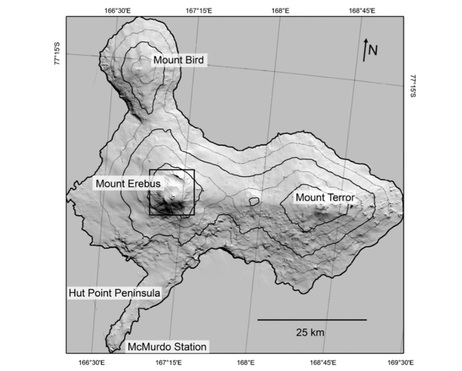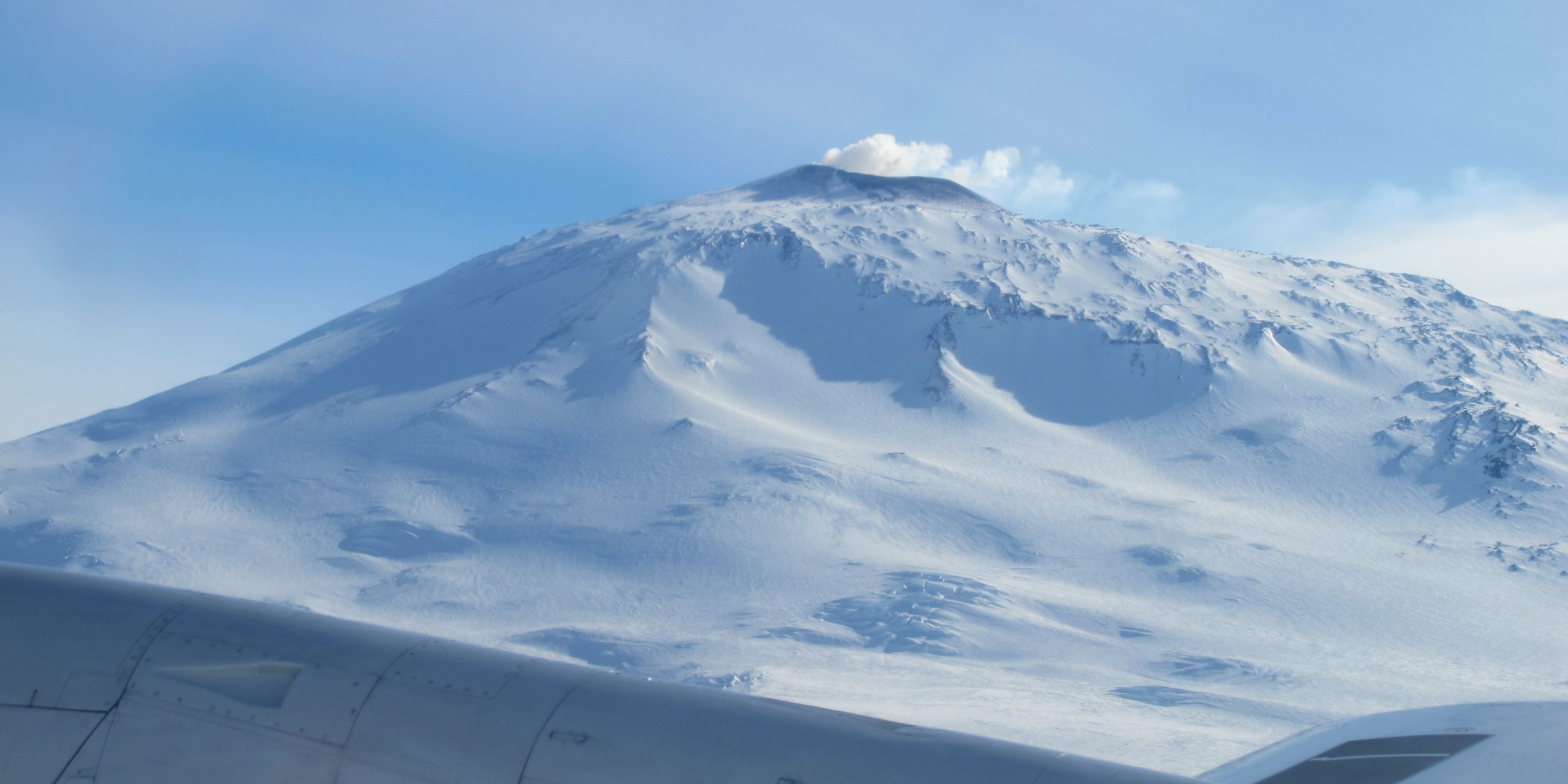Despite the freezing conditions, Antarctica is home to several volcanoes. There are four volcanoes on Ross Island, although all are inactive except Mount Erebus, which has increased in volcanic activity in the last 30 years. Antarctica Mount Erebus is the worlds most southern active volcano.
Mount Erebus is an extreme natural wonder, with liquid magma and ancient lava lakes that have been boiling for around 1.3 million years. It’s the world’s southernmost active volcano and Antarctica’s second-highest volcano, towering to 3,800 meters high.
One of Antarctica’s only active volcanoes is home to one of the few long-lasting lava lakes on Earth. The lake occasionally blasts out lava bombs from the summit crater of Mount Erebus.
Mount Erebus was discovered in 1841 by polar explorer Sir James Clark Ross (whose ships were named Erebus and Terror; these ships were also used by Sir John Franklin on his disastrous search for the Northwest Passage), and first climbed (to the rim) by members of Sir Ernest Shackleton’s party in 1908.
Scientists cannot often visit Mount Erebus due to the remote location and dangerous weather conditions, although a team of scientists managed to climb the volcano in 2013.
They hiked through snow, rocks, and glaciers to the peak, where they found organisms living in the heat of the volcano. They also discovered a few ice caves with thriving microorganisms in the soil, and it is believed that these extreme creatures are some of the most unique in the world.
One of the things that makes Erebus significant – and the reason it is the location of the Mount Erebus Volcano Observatory, or “MEVO” – is that Erebus is one of only a few consistently active volcanos in the world. Rather than lying dormant and then spectacularly erupting once every few hundred years, though it does that on occasion too, Mt. Erebus is always on, bubbling, releasing gas and flinging ten feet wide “volcanic bombs” – hunks of molten rock which sometimes explode on landing – through the air. For a vulcanologist, Mt. Erebus is a dangerous but dreamy research site.
In 1908 according to some, Mount Erebus was unsuccessfully ascended for the first time by members of Sir Ernest Shackleton’s party; Professor Edgeworth David, Sir Douglas Mawson, Dr Alister Mackay, Jameson Adams, Dr Eric Marshall and Phillip Brocklehurst. The first official and successful ascent was done by Roger Mear on 7 June 1985, who was the first solo climber, and incredibly enough, done in wintertime.
Being one of the most isolated places on the planet, it is known also for the tragic air disaster of the Air New Zealand Flight 901 which was done by a DC-10 airliner, and soon after it was already coined also as the Mount Erebus Disaster. The flight was scheduled for a sightseeing service from Auckland, New Zealand to Christchurch, New Zeland, and then returning again in Auckland.
The Ross Sea is one of the least-iced and most-accessible of Antarctica’s fringe seas. Relatively easy access made this region the traditional avenue for mounting expeditions into the continental interior. The sea was first penetrated on January 5, 1841, by the HMS Erebus and HMS Terror, commanded by James Clark Ross on an unsuccessful attempt to reach the south magnetic pole.
Since then, various points on the Ross Ice Shelf have served as bases for exploration parties from Norway, Great Britain, Japan, the United States, and New Zealand. All coastal regions have been geologically explored, at least in reconnaissance, and the southern Victoria Land region near McMurdo Sound has become the most thoroughly known on the continent. Antarctica Mount Erebus will hold the fascination of scientists for years to come, as much as Antarctica does too. Do you like stories about Antarctica? Have you read Arctic Ave yet or Arctic Record? Two thrillers that involve Antarctica.







